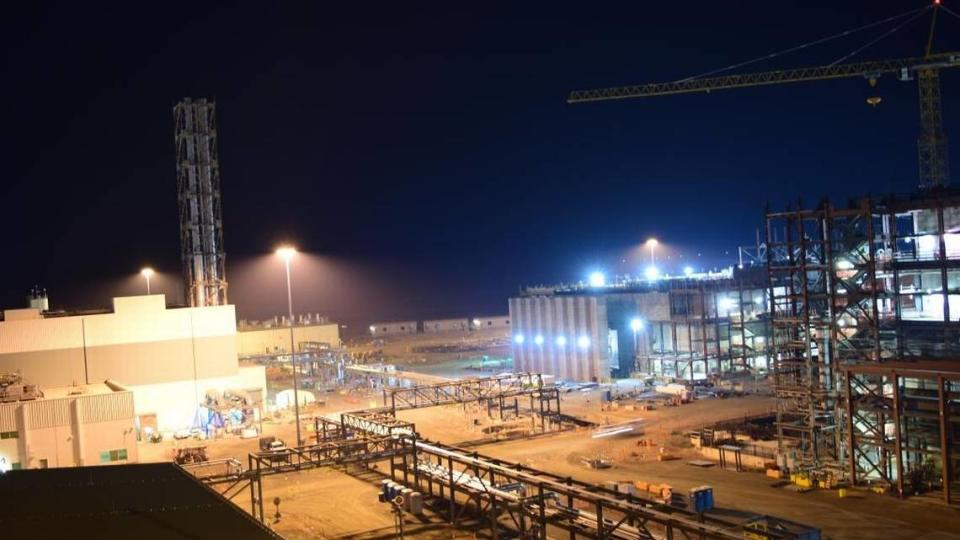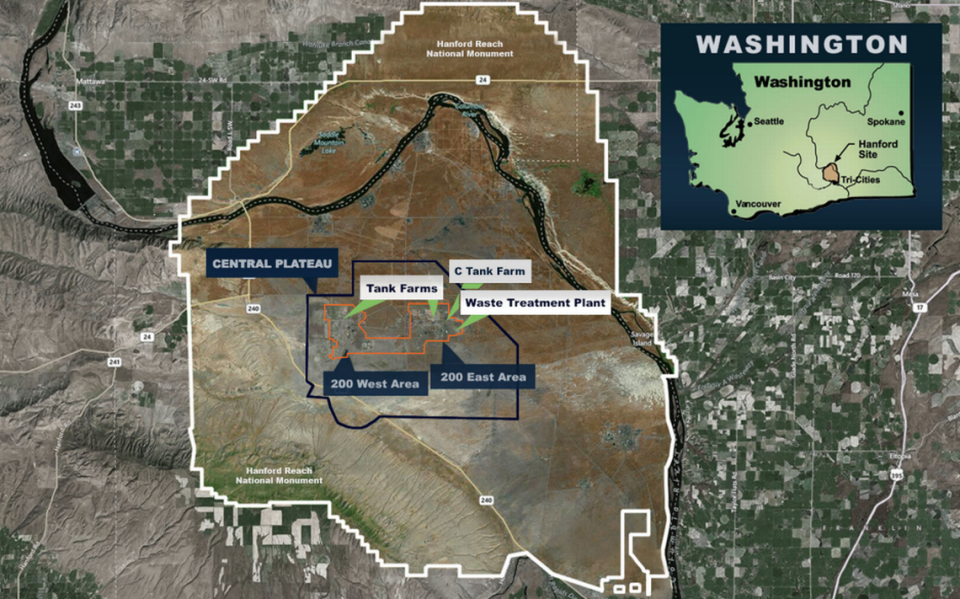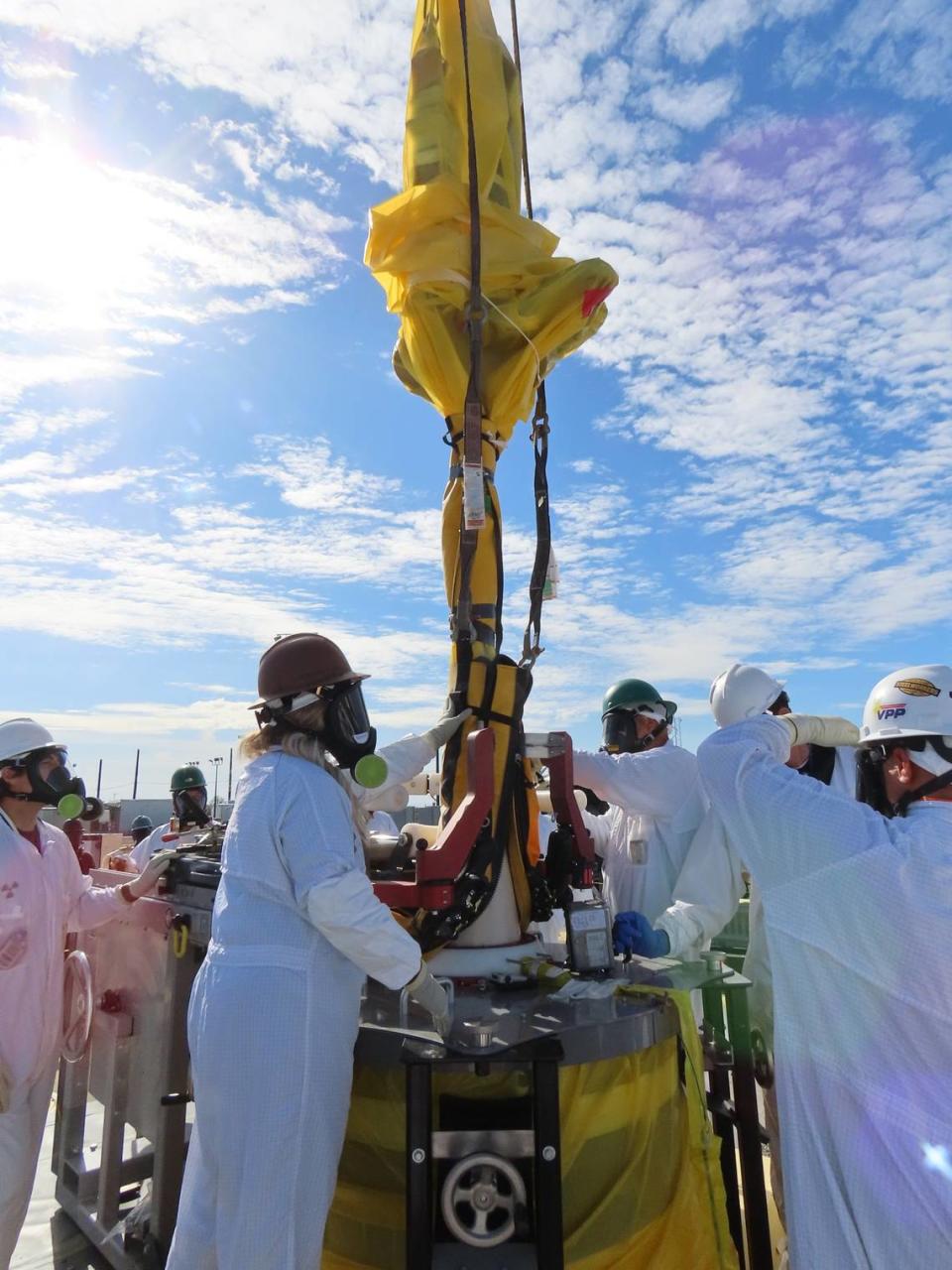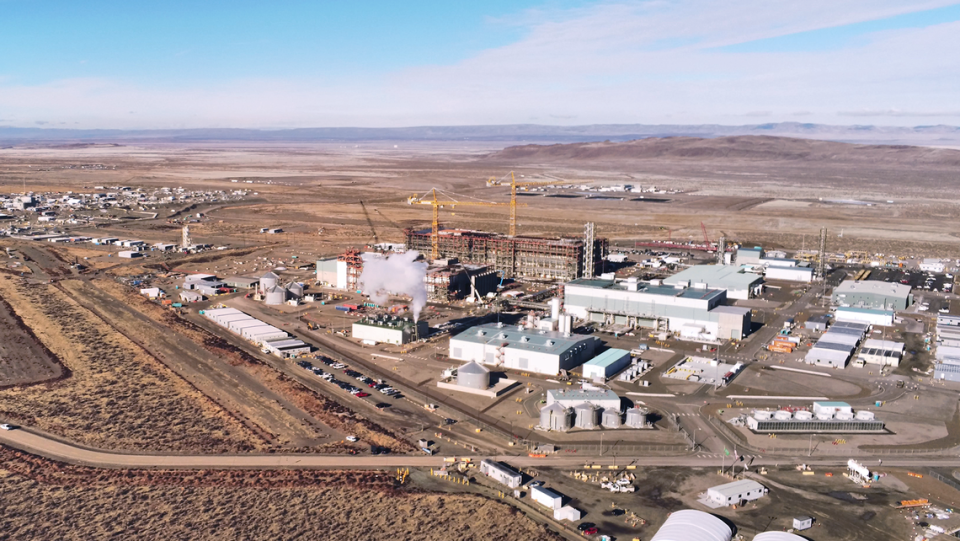10-year, $45 billion contract awarded for Hanford nuclear waste cleanup in Eastern WA
The Department of Energy has awarded an environmental cleanup contract for the Hanford site worth up to $45 billion to a newly formed limited liability company based in Lynchburg, Va.
For the second time the winning bidder for the Eastern Washington nuclear reservation work is Hanford Tank Waste Operations and Closure, called “H2C,” which is made up of BWXT Technical Services, Amentum Environment and Energy, and Fluor Federal Services.
“Our long history and extensive experience bringing advanced technical solutions to safely manage legacy liquid waste at the Hanford Site makes us the best partner for the Department of Energy,” said John Heller, Amentum chief executive officer.
The 10-year contract, which includes some work that could extend an additional five years, covers the initial operation of the vitrification plant, which is being commissioned now after construction began in 2002, and work at the tank farms where radioactive waste is stored underground until it can be treated, much of it at the vitrification plant, for disposal.
DOE awarded the contract, called the Hanford Integrated Tank Disposition Contract, to the same company in April. But the award was challenged in the U.S. Court of Federal Claims by the losing bidder, Hanford Tank Disposition Alliance, or HTDA.
HTDA argued that H2C had not properly registered to bid in a required federal database and questioned the safety performance of its member companies and the strength of its proposed leadership team.
HTDA was formed by Atkins Nuclear Secured, Jacobs Technology and Westinghouse Government Services. In November Jacobs merged some of its business lines with Amentum.

U.S. Judge Marian Blank ordered the contract to be set aside in a ruling June 12, finding that H2C was ineligible for the award because it had not met a mandatory requirement in the bidding process.
It had let its registration to bid on large federal projects lapse, according to the court order.
DOE then asked for revised proposals and evaluated them to make the contract award on Thursday.
Contractor responsibilities
H2C will operate the Waste Treatment Plant, or vitrification plant, after commissioning is completed that will prepare it to start treating the least radioactive waste stored in underground tanks.
H2C also will be responsible for core functions of the plant, including project management, security, emergency services, and safety and quality.
The 580-square-mile Hanford site in Eastern Washington adjacent to Richland was used from World War II through the Cold War to produce nearly two-thirds of the plutonium for the nation’s nuclear weapons program.

The work left 56 million gallons of radioactive and hazardous chemical waste stored in underground tanks, many of them prone to leaking.
The plant is planned to vitrify much of that waste to turn it into a stable glass form for permanent disposal.
After technical issues needed to be resolved on parts of the plant treating high level radioactive waste, DOE switched to a plan to separate out some of the least radioactive waste, called low activity waste, and start treating it as work continues to prepare to treat high level waste.
Bechtel National is commissioning the plant, and DOE plans to start regular operation of the plant to initially treat low activity radioactive waste in 2025.
A deadline for treating low activity waste by the end of 2023 was set in a federal court consent decree, but the deadline was extended due to work delays during the COVID-19 pandemic.
Hanford communities plan required
The new contractor will take over work at the tank farms from Washington River Protection Solutions, also an Amentum led company, with a 120-day transition period starting immediately, unless there is another protest or appeal of the contract award.
“Amentum and our partners have a tremendous track record of treating waste and managing nuclear operations around the DOE complex,” said Mark Whitney, president of Amentum’s National Security Group. “We will bring the most advanced technologies and experienced team to help solve one of our nation’s most important environmental challenges.”
Washington River Protection Solutions has held the expiring contract for tank farm work since 2008 and has been given several short-term contract extensions. Most recently its contract was extended in summer 2023 for up to two years.
Traditionally most employees of Hanford companies with expiring contracts are hired by the new contractor with only leadership changing.
The current tank farm contractor employs about 2,400 workers and relies on an additional 350 subcontractor workers.

No workforce impacts are expected under the new contractor if stable funding for the Hanford site continues, according to DOE. It described the benefits that workers would receive under the new contract as competitive and comparable to current benefits.
Work at the tank farms includes emptying waste from 149 leak-prone single shell tanks into 27 newer double-shell tanks for storage until it can be treated for disposal and eventually permanently closing the tanks.
Work also includes separating out low activity waste from the waste mixture in the tanks to feed to the vitrification plant’s Low Activity Waste Facility to glassify it for disposal.
The new contractor is teaming with four subcontractors on the work: DBD, DSS Sustainable Solutions USA, Intera, and Longenecker and Associates. A portion of the contract’s work must be subcontracted to small businesses.
The new contract promotes “robust” community commitment and engagement, including support to site reindustrialization by the local community, according to DOE. Parts of the site are in Benton, Franklin and Grant counties.
H2C will be required to submit a community commitment plan to DOE.
The activities could include educational outreach programs, regional purchasing programs and other community support, DOE said earlier.
H2C is expected to be required to subcontract 18% of work under its contract to small businesses, but those do not have to be Eastern Washington businesses.
H2C owners’ Hanford history
Amentum already has a strong presence at Hanford as the owner of the current tank farm contractor with Atkins, leading the Central Plateau Cleanup Co. team and as the primary subcontractor at the vitrification plant construction and commissioning project.
BWXT was awarded the environmental management contract for DOE’s Savannah River, S.C., site in 2021.
Fluor is best known at Hanford for being the site’s main cleanup contractor from 1996 to 2008. It also is a partner with Amentum on the Central Plateau Cleanup Co. contract, which is responsible for most environmental cleanup at Hanford other than tank waste.
This is the third time DOE has tried to replace the expiring tank farm contract.

In May 2020, DOE awarded a 10-year, $13 billion contract to manage Hanford tank waste to a team headed by BWXT and Fluor with primary subcontractors Intera and DBD. It did not include the vitrification plant work.
But after appeals were filed to the Government Accountability Office over the choice of the new tank contracting team, DOE canceled the contract award.
One appeal was filed by a company owned by Aecom, Fluor and Atkins and the other by a company owned by Jacobs Government Services Co.
The GAO dismissed the appeals, but DOE voluntarily decided to address an issue raised in the appeal and canceled the contract.
In February 2021, DOE announced that it would instead seek a contractor for both vitrification plant operations and also the management of the tank farms. Then it estimated the value of the new contract at $26.5 million over a decade.
The new contract uses DOE’s “indefinite delivery, indefinite quantity” contracting model, under which DOE awards a contract and then negotiates specific tasks to be completed.
Under the contracting model, tasks may be paid for either through the traditional Hanford method of reimbursing costs and paying incentive fees to allow the contractor to profit or by offering a fixed price for completion of work, shifting financial risk to the contractor.
The tasks will focus on providing the most reduction of risk and taxpayer costs and advancing environmental cleanup, DOE said in 2021.

